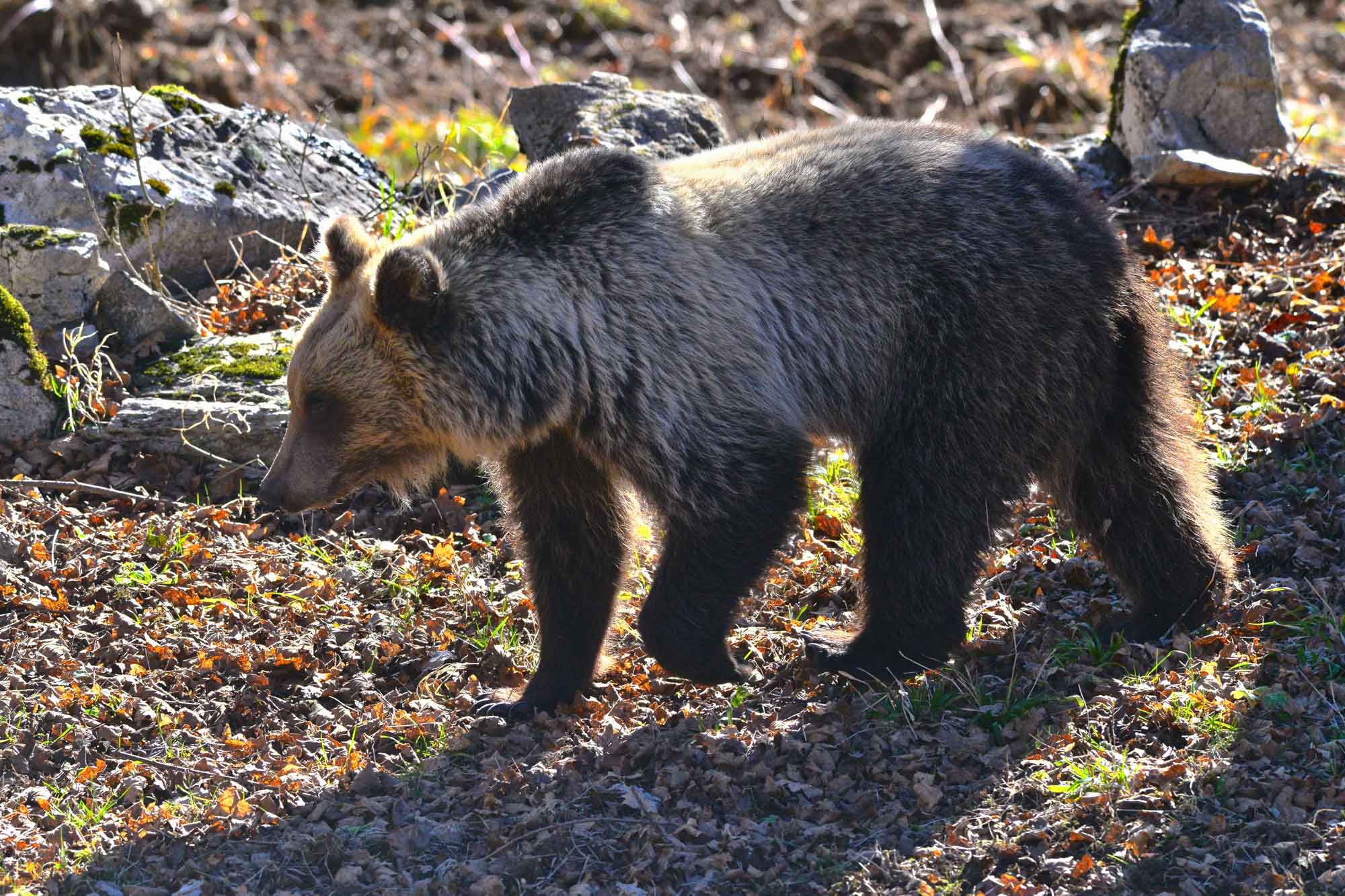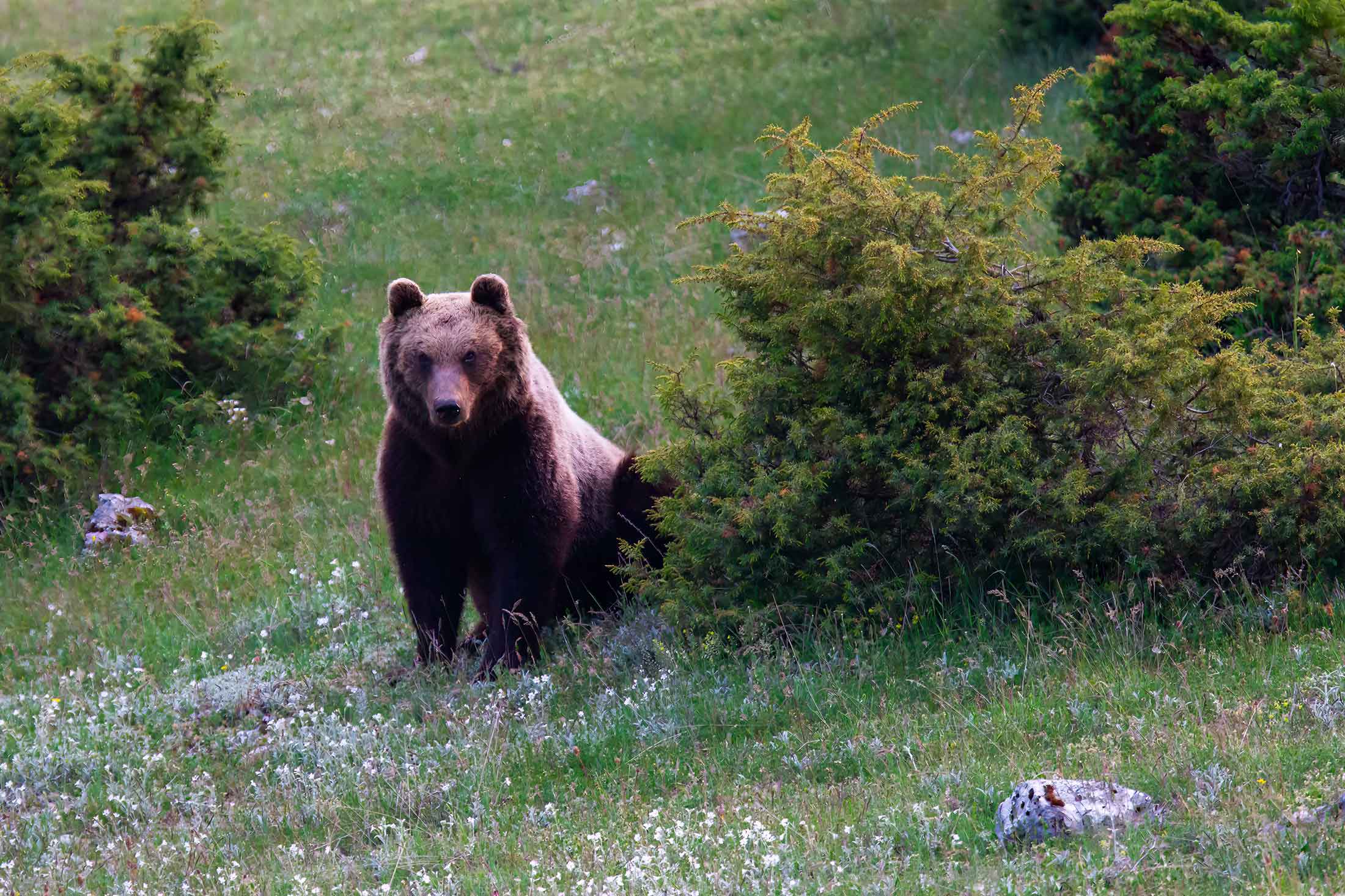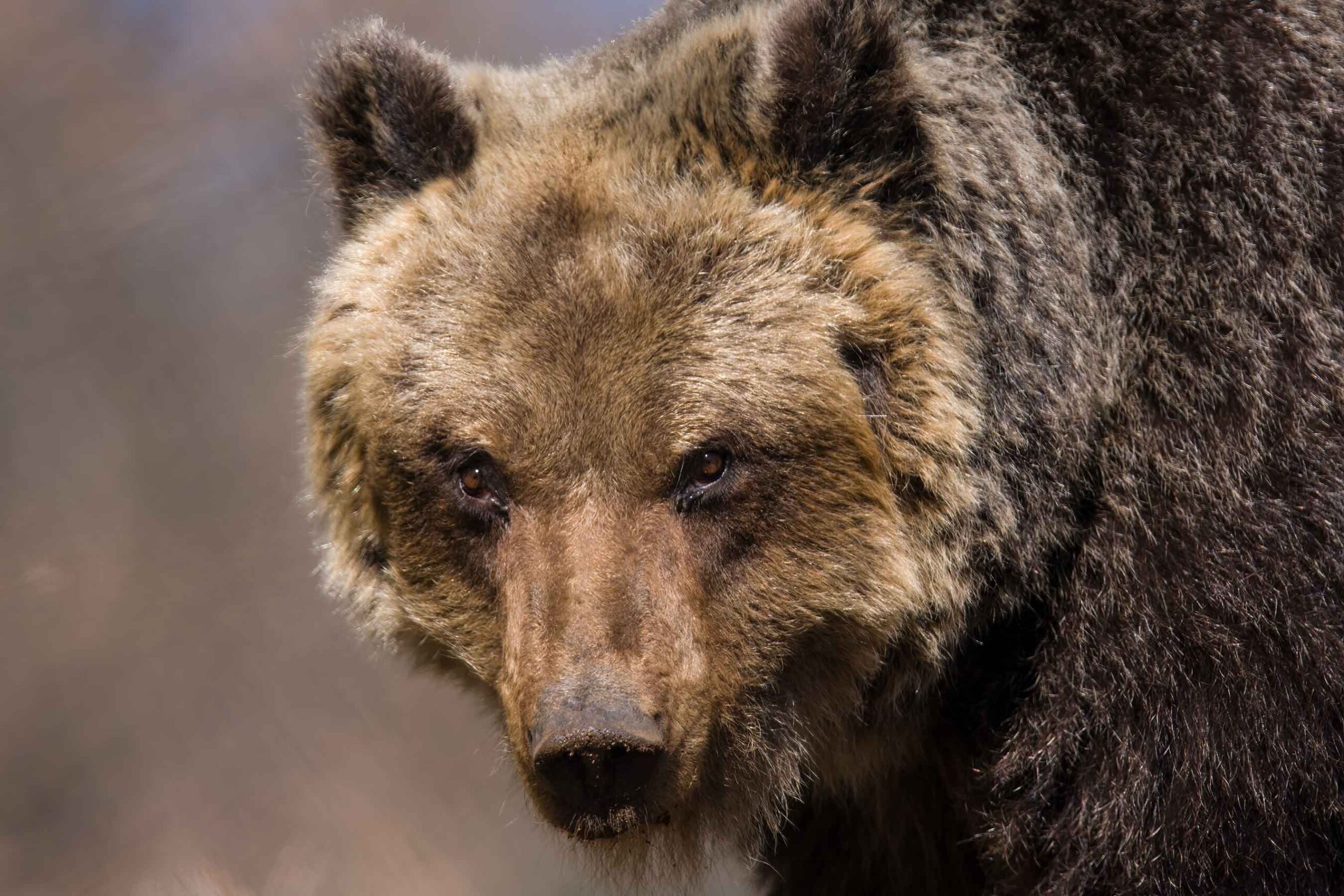Biology & habitat
learn more/ the marsican brown bear / biology & habitat
The brown bear population of the central Apennines was described as a subspecies under the name Ursus arctos marsicanus by Giuseppe Altobello, a naturalist from Molise, in 1921.
Compared with other European brown bear populations, the Apennine subspecies is distinguished by several morphological and morphometric characters of the skull that are particularly noticeable in adult specimens. While in females and juveniles the skull is similar to that of other Euro-Asian populations, in males the head is short, broadened, and tall with a marked crest and short snout.
Despite their smaller size compared to the Alpine-Balkan brown bear, male Marsican brown bears usually weigh between 130 and 200 kg with a height of 180-190 cm in an upright position, while females are smaller and rarely exceed 120 kg. Generally, the sex ratio in the species is 1:1.
Bears’ eyesight is not very acute, but they compensate with an extremely developed sense of ‘smell. It is estimated to be 2,000 times stronger than the human one. The sense of smell is used not only to find food, but also to identify dangers and to communicate with conspecifics. In fact, bears as they pass leave “scent signals” that can be read by other bears. The bear verse is called
ruglio
. Although they can live more than 40 years in captivity, they hardly exceed 25 years in the wild. Every year it repeats, similar but never the same.
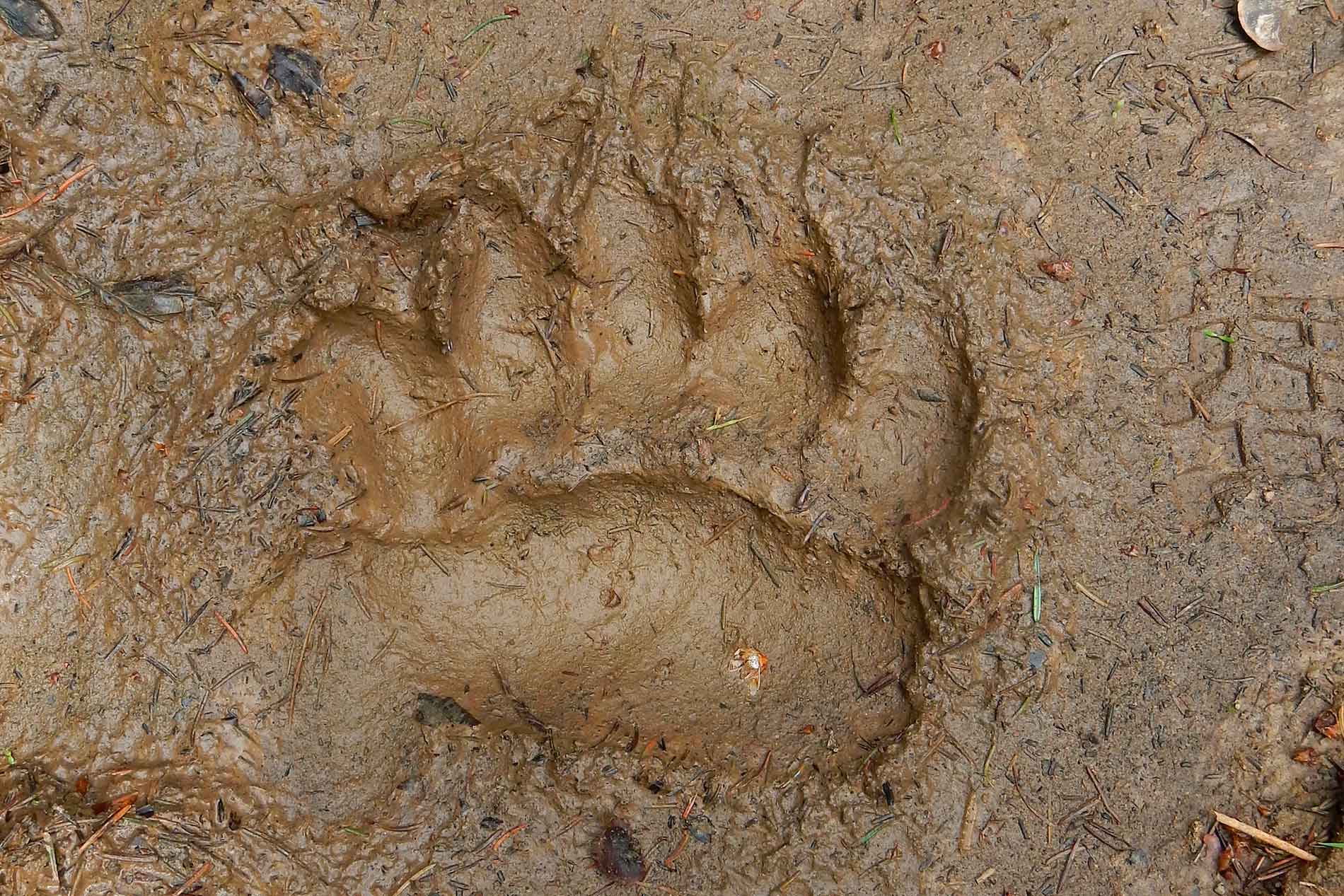
Time for love…
Between May and June the mating and mating season begins.
Courtships occur every year at the same locations, which often correspond to the sites where females without pups go to feed. Not everyone can participate in courtship; in fact, males fight among themselves and establish a hierarchy of access to females. Each female can give birth to 1 to 3 pups, rarely 4, and gives birth every 3 to 4 years, starting from the age of 4. Getting a litter to survive takes a lot of time and energy. Therefore, among the winning males, it is the females who choose which one they think will be the best father for the pups.
Very often males around 10 years old are chosen; in fact, at this age males reach their peak physical performance and have gained some experience. Pairs can spend up to several weeks together, in this way the males ensure that the conquered female does not mate with other males. After the very early stages of development, the fertilized egg stops in a state of dormancy or
embryonic diapause
.
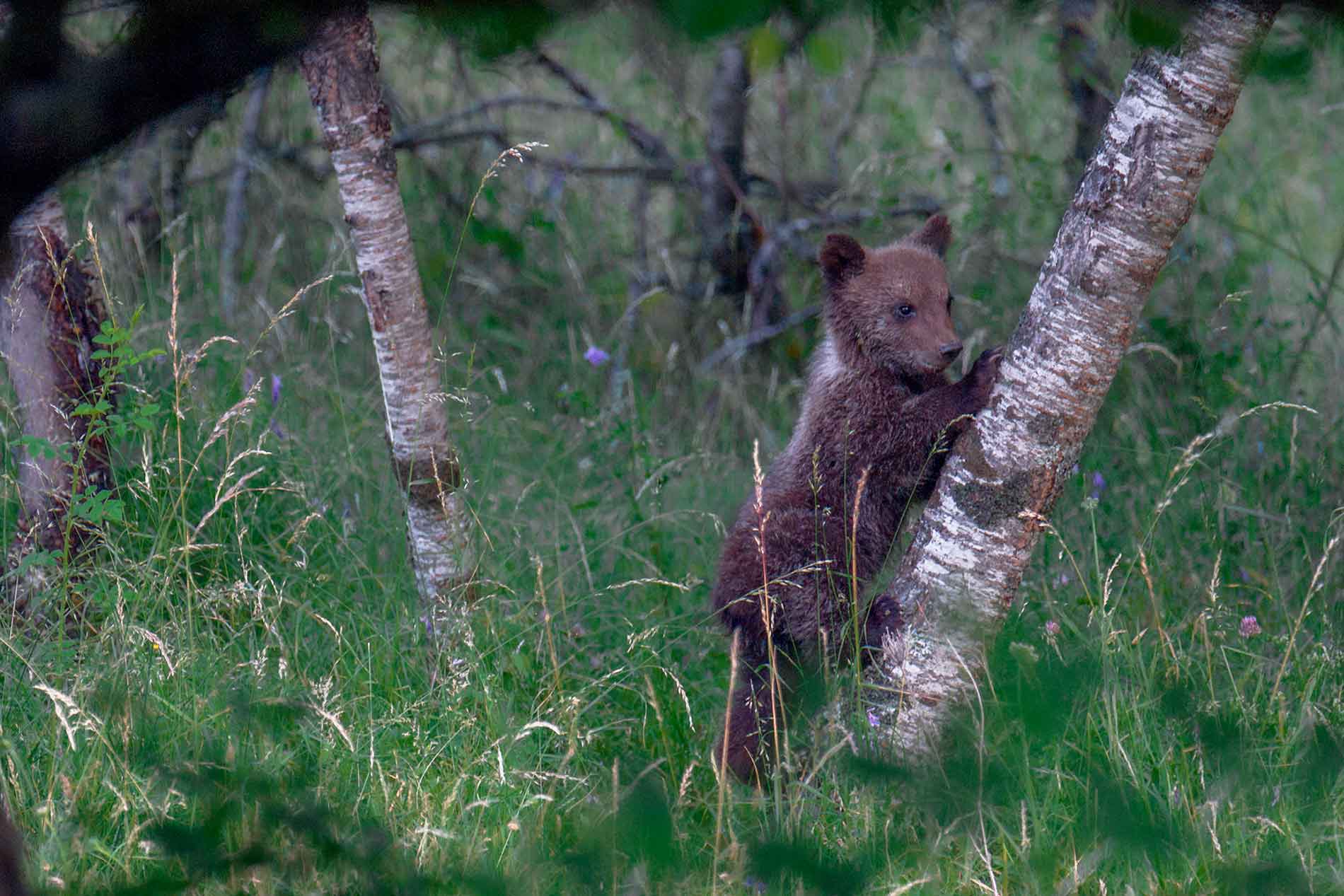
And of puppies…
Pups are born between January and February, during hibernation. At birth they weigh between 200 and 500 grams. The high nutritional value of breast milk will enable the rapid growth of teddy bears, which will be ready to come out of the den when the mother wakes up. Cubs stay with their mother for about two years, during which time they have to learn where and how to feed, how to behave in case of encounters with other bears, dangerous and safe places. About half of the pups survive the first year of life. The main causes of death are: disease, predation, aggression by adult males, and poisoning. Orphaned puppies also have little chance of survival unless they are adopted into another household.
Time to eat…
Despite being considered the largest carnivore in Italy, its diet consists of about 80 percent plant matter. The bear feeds mainly on beechnuts, acorns, ramno, berries, roots, wild fruits, insects, honey and meat. Bears need huge amounts of food to prepare for winter. During the period before hibernation, called the hyperphagia period, they can spend up to 14 hours a day feeding by increasing their weight by up to 40 percent.
Time to sleep…
During the first snowfall of the year, bears begin to retreat to their dens. The hibernation period begins, during which metabolic rhythms are minimized. In hibernation, bears do not urinate, defecate, breathe 1-2 times per minute, and the heart works at 10 beats per minute . The hibernation period is very gentle. Disturbance by humans can wake up hibernating bears. Once they wake up, they begin to consume a lot of energy and have to set out to find food sources, which are not always available in winter. In the worst case, the bear may decide to abandon the den. This, in the case of mother bears, may result in the abandonment of cubs in the den. Bears choose their dens in particularly inaccessible and quiet places, often rock cavities where the animal accumulates branches and grass to create a bed for itself. Burrows usually consist of a low, wide entrance, allowing snow accumulation at the entrance, and a small chamber.

The Marsican brown bear in the wild
Is able to colonize many types
Of different environments.
L’habitat of the plantigrade is very diverse and varies according to the season. It ranges from mountain forests to valley bottom clearings, which it frequents in early spring, to high-altitude grasslands, to which it moves in the warmer months in search of refreshment and to feed on the ramno berries that ripen in late summer.
Between 900 and 1900 m above sea level the beech forest Is the queen of the central Apennines. In these forests, the dominant species is beech (Fagus sylvatica) but you can find associations, rare and protected, such as that with the badger (Taxus baccata) and holly (Ilex aquifolium), or with white spruce (Abies alba). The beech forest for bears, and many other animals, is an ideal refuge, especially in areas that are more difficult to access.
Keeping these refuge areas Is essential for the survival of bears. To date, the main mountain forests of the central Apennines are protected a complex system of parks and nature reserves. It is essential to give continuity to the bears’ range, to allow them to move from one refuge area to another by safely traversing the valley floor and areas of higher anthropogenic concentration.
The Marsican brown bear population is concentrated almost exclusively in the territory of the Abruzzo, Lazio and Molise National Park and the Outer Protection Zone. Other neighboring areas are slowly beginning to be affected by a stable bear presence, such as the Monte Genzana Alto Gizio Regional Nature Reserve and Maiella National Park. However, to ensure a future for this unique subspecies in the world, we also hope for a stable colonization in areas that have so far seen only the sporadic presence of dispersing juveniles, such as the Sirente Velino Regional Park, the Duchessa Mountains, the Carseolani Mountains, the Ernici Mountains, the Terminillo Mountains, the Gran Sasso and Laga Mountains, and the Sibillini Mountains.

Save the Bear
Association for the Conservation of the Marsican Brown Bear ONLUS
Olive Park Street, 11
65015 Montesilvano (PE)
Italy
VAT NUMBER: 02189990688
CF: 91117950682
MAIL: info@salviamolorso.it
PEC: ass.salviamolorso@pec.it
Donate now
Contact us
Privacy Policy

